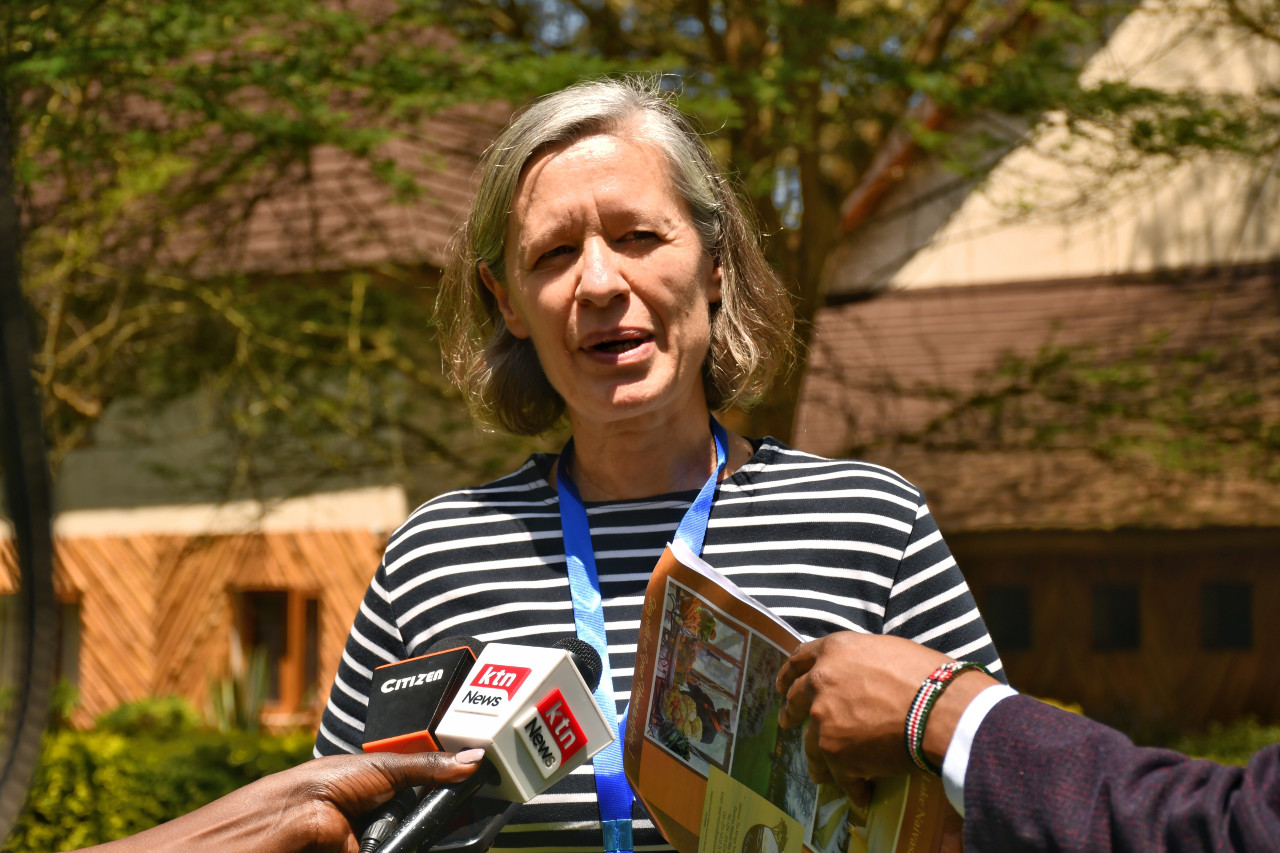Government seeks Sh440 Billion to secure the livestock feed sector
KNA by Mabel Keya - Shikuku
The Government is seeking to invest $3.4 billion (Sh440 billion) spread over 10 years (from 2022 to 2032) from donors to make the livestock feed sector secure and resilient in times of calamities.
The Head of Animal Feeds and Nutrition Services at the Ministry of Agriculture and Livestock Development Dr. Stanley Mutua said the Ministry carried out research in arid areas in 2018 -19 and in non-arid areas in 2019 to 2022, and the report showed that the country is facing a 60 per cent feed shortage and even out of what is being produced, 46 per cent goes to waste.
“Kenya requires 55 million metric tonnes of dry matter animal feed annually but only produces 40 per cent leaving a huge supply gap of 33 million metric tonnes, which unfortunately has to be imported, and this leaves this critical sector in a very precarious position,” Dr. Mutua said.
He said it’s in this regard that the Ministry has come up with a National Feed Policy after it also emerged that Kenya`s livestock sector was facing a 26 per cent malnutrition which has caused stunting, thus affecting productivity.
Dr. Mutua was speaking in Naivasha during a five-day workshop attended by six African countries piloting the Resilient African Feed and Fodder Systems (RAFFS) program hosted by the African Union-InterAfrican Bureau for Animal Resources (AU-IBAR) to look at the issues facing African countries feed inventory and balance for Africa, establish the status of the feed sector and agree on common Africa approach on the sector.
Dr. Mutua said from the report of the research which was done in two phases, the Ministry of Agriculture and Livestock Development has come up with various interventions which include promotion and prioritizing 10 feed value-chain to produce required feed in the country.
He noted that the government’s national feed strategy will help to address animal feeds and water shortages for livestock and feed quality by looking at energy sources such as maize and sorghum and protein-rich sources such as soya, sunflower and cotton seed and black soldier fly for animal protein.
To reduce losses, the animal health expert said the government has initiated measures to address production, storage and conservation of the feed by investing in storage infrastructure where feed storage hubs will be constructed in every county with a capacity of 100,000 bales of fodder each weighing 15 kilograms.
This will help produce 4.3 billion bales of hay every year through an investment of $3.4 billion (Sh480 billion) spread over 10 years and help bridge the deficit in feed production.
“Through the report, we have come up with a feed delivery model in order to stem malnutrition which now stands at 26 per cent and have also come up with a model to reduce costs by producing feed in bulk and a feed emergency program,” Mutua stated.
“We also intend to reduce post-harvest losses by linking the end user and producer and we have come up with Feed Investment Plan (2023-2024) which we have used to pitch for funding and have already used $164 million on it and we expect to use a further $267 million on the same this financial year,” he added.
During the five-day meeting, Kenya reported on how it utilized data from the research and explained a national feed strategy for 10 years for sustainable livestock production.
Mr. David Maina from the AU-IBAR- Resilient African Feed and Fodder Systems (RAFFS) program said the two organizations were working with farmers to create an inventory that will show the status of livestock feed in the concerned countries for the purposes of planning.

